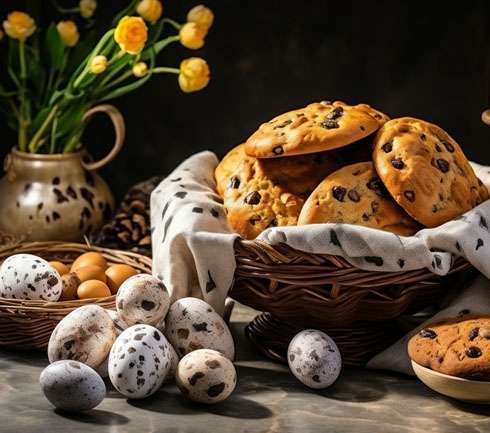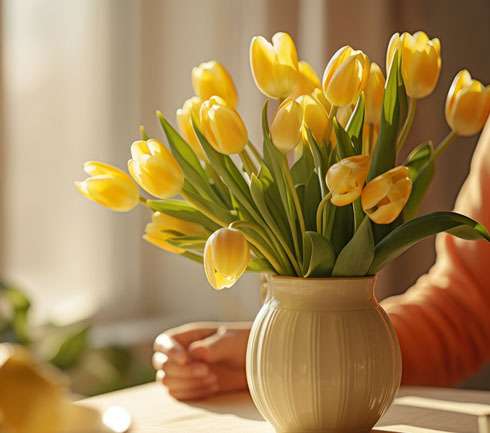It’s Sunday, December 28, 2025 in Austin, Texas
The Best Antique Roses for Your Austin Garden
Here's a list of the best antique and old roses for your Austin garden plus a few recommended David Austin Roses. There is extensive discussion of Bourbon roses and the roses of Constantinople.
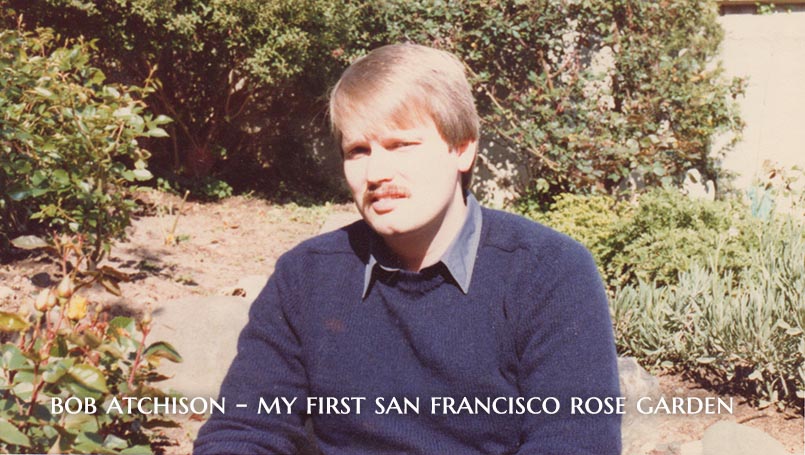 I have been growing roses in Austin since 1992. In that year I moved to Austin from San Francisco, where I had a rose and herb garden with over 100 varieties. I had been transferred by Apple to Austin and the company paid for my moving. I decided to dig up a large number of my roses, put them in peat pots and load them onto the moving truck. It was late December so the plants had gone dormant. I had many rare roses I had collected over the years, some were grown from cuttings I had brought from England and France.
I have been growing roses in Austin since 1992. In that year I moved to Austin from San Francisco, where I had a rose and herb garden with over 100 varieties. I had been transferred by Apple to Austin and the company paid for my moving. I decided to dig up a large number of my roses, put them in peat pots and load them onto the moving truck. It was late December so the plants had gone dormant. I had many rare roses I had collected over the years, some were grown from cuttings I had brought from England and France.
During a private tour, I ran into the Royal Gardeners at Windsor Castle and spent some time talking with them about English royalty and roses. There took me to one rose they thought I would like that was not in bloom at the time. Such is the camaraderie I always find among lovers of old roses, they were so kind to give me cuttings from some of the roses, Queen Victoria had planted and grown, all carefully marked. They told me the rose they had pointed out for me was a plant that the Queen had cut roses from for her children's weddings with her own hands. The cuttings I got from this plant grew roots and in two years red roses appeared . I tried to figure out what variety they might have been, and it took me another year to conclude it was the pre-1786 Dutch Gallica rose, Charles de Mills. That rose was certainly old enough to have been grown by the Queen, but I don't why the Queen would direct red roses to be used in bridal crowns and bouquets. I did some research and I couldn't find any record of red bridal roses being used, and Charles de Mills, not a repeat bloomer, was not in season on the wedding dates in Windsor I looked at. It is true that the Queen made many gifts of roses and other flowers that she cut herself. She also made gifts of potted roses from her greenhouses all year round. My Royal Gardener friends also gave me bags of rose hips with seeds to create seedlings with.
I also had plants that had grown from cuttings from plants in Josephine's garden at Malmaison. None of these did anything. I didn't know that, at the time I was there, Josephine's garden had many modern tea roses from French rose growers and this is what I seem to have taken cuttings from. Modern tea rose form, garish colors and odd, very light, perfumey scents. I remember none of the roses in her garden were marked at the time.
Some of my other roses were discovered during my travels all over the world. On one of my trips to France I was driving out to Versailles, the country palace of the Kings and Queens of France, and I saw a huge rose bush covered with hundreds of giant quartered flowers that looked like they had 100 or more petals that was multi-colored in pink and dark mauve. They were very fragrant, too. It was in the front yard of an old French home, growing right next to the street. I went up to the front door of the house and begged them for cuttings. It was an old couple and I couldn't understand the French they were speaking. They seemed to be arguing. Afraid of being turned down I offered them money for cuttings using gestures to convey this. They answered in English, "Sir, if you want to pay you can have the old bush!" I was really temped and tried to imagine how to get it through customs. I wanted this rose so badly! The couple gave me armfuls of free flowers which I took back to my hotel in Versailles and I didn't have to pay for my cuttings!
I have never seen this rose before or after this. It seemed to me to be completely unique. I was very fortunate to have the cuttings root when I got back to SF. It took three years to get my first blooms - and then I had to move from the house where I had that garden! It had grown in a rocky terraced garden and the roots had spread under stone walls and edging. It was impossible to dig up. The cuttings I took did not root. When I sold that house I asked the new owner to take care of that rose and a chestnut I had grown from one planted by Nicholas and Alexandra at Livadia in the Crimea. Who knows what has happened to them, if they survived. I wrote to the new owner, but he never answered. That was not a good sign. A couple of years ago I found aerial views from Google of the garden of that house but could not tell if they were still there. I still dream about that rose from time to time - I suppose that's another indicator that my fascination with old roses is an obsession.
I still have no idea what the name of the rose was, I am sure it was some forgotten variety from the 19th century that had been planted and then forgotten.
In Texas they call people who hunt down old roses to rescue 'rose rustlers'. They have found and saved many rose varieties in southern gardens that would have otherwise been lost. In Texas they search old homes, fallen-down barns and graveyards for them. In the 1990's interest in old roses reached a peak in the South and almost every garden had old roses in them, especially these discovered roses, which were almost care-free. Old roses that have survived years of neglect in the harsh Texas climate, proved they were proven choices for our hot summers and horrible soil conditions.
Now I shall return to the roses I moved to Austin. I will list my favorite old roses for Austin shortly.
They arrived intact and I planted them all in the front garden of my 1924 Spanish revival home in Austin. I had moved into a much bigger house and garden in Austin. The house sort of reminds me of the Casa del Sol at San Simeon, albeit in a simplier version. It was one of the reasons I bought it. In San Francisco I had always lived in old Victorians and I had initially only looked at new homes (no plumbing and electrical problems!) - but made an offer on this house the same day I found it. My agent didn't want to show it to me, "why would you want an OLD house like that?". It had a row of twisted columns and cottage-like garden out front with a winding path from the street to the front door. Inside it had huge vaulted ceilings, wrought iron railings and Batchelder tiles.
Even before the furniture was moved in I was planting my rose refugees - the big peat pots were arranged across the front, along the sidewalk and then on both sides of the path. When I dug out the holes for each plant I was shocked to discover how difficult it was was to dig even a shallow hole. About seven inches down I hit a hard layer of soil that was like concrete . After an hour of trying to dig just one hole and I realized I could not do this myself and hired some guys to do it for me. I should have gotten advice about growing conditions in Austin before planting. After a week of hard work by my diggers the holes were dug. They weren't as deep and they should have been, but my diggers had refused to dig anymore and gave me several ruined shovels as sorry souvenirs. I put the big peat pots with the rich soil from my San Francisco garden right into the hard clay.
The first year I had fantastic results, the roses grew big and had hundreds of blooms - I think I had planted 30 of my favorites from San Francisco. The second year many of the roses started to turn black and die, I couldn't figure out what was wrong, I tried watering more, which seemed to make it worse. Someone told me I needs to mulch them, so I spent a fortune on the best (and most expensive) mulch I bought at the now long-gone store, Garden's on 38th street. $48 for a big bag, primo stuff, that they made themselves. I needed lots of bags to make it 4+ inches deep. Adding the mulch had no effect, the roses continued to shrivel and die. TOO MUCH WATER! It turned out that new roses never grew outside the peat pots and were drowning in bathtubs of water that could not permeate the peat into the clay.
I finally got some good advice from a local rosarian and discovered I had to start over. I saved the plants I could, tore out the entire front yard and put in 24 inch deep raised beds with specially blended rose soil in them. 24 inches of locally made rose soil was less than what I had spent on my primo mulch.
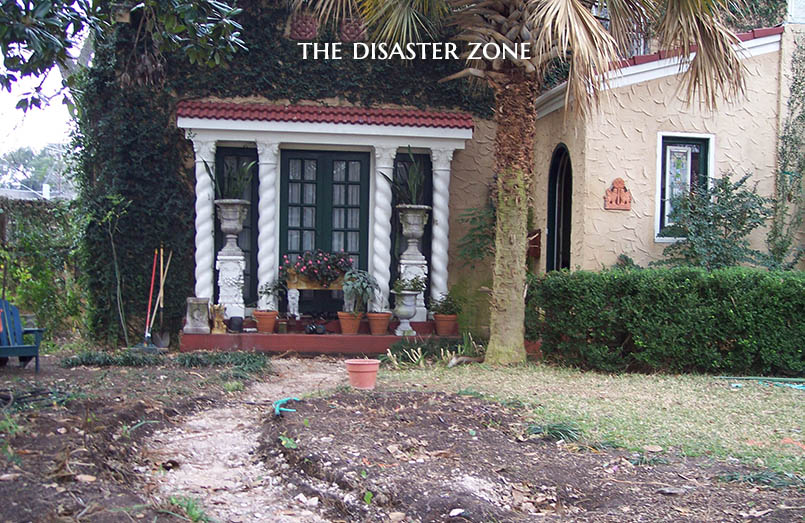
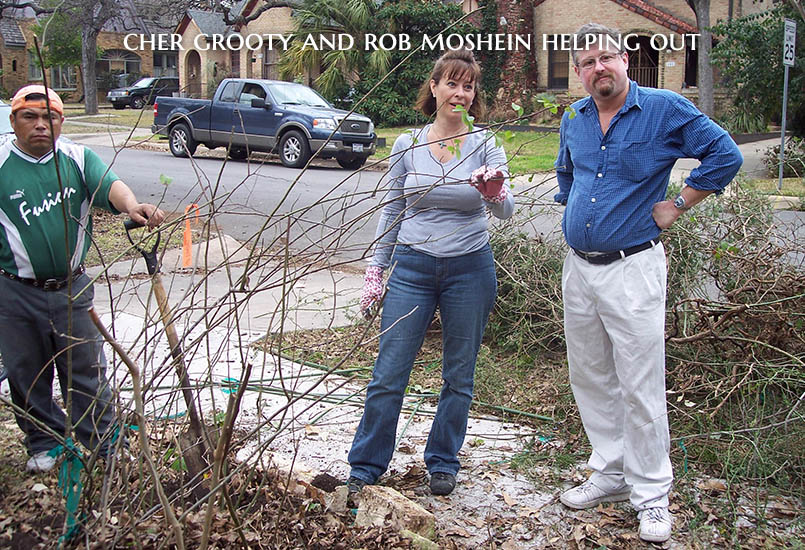
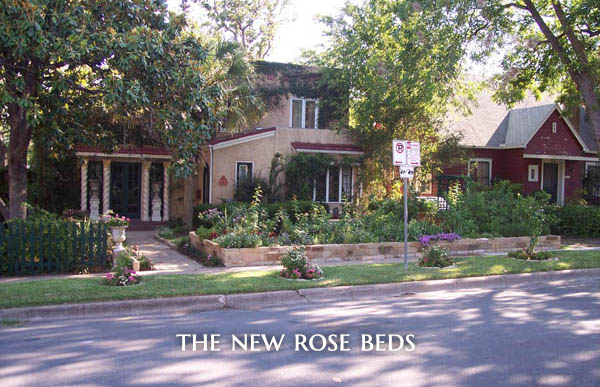
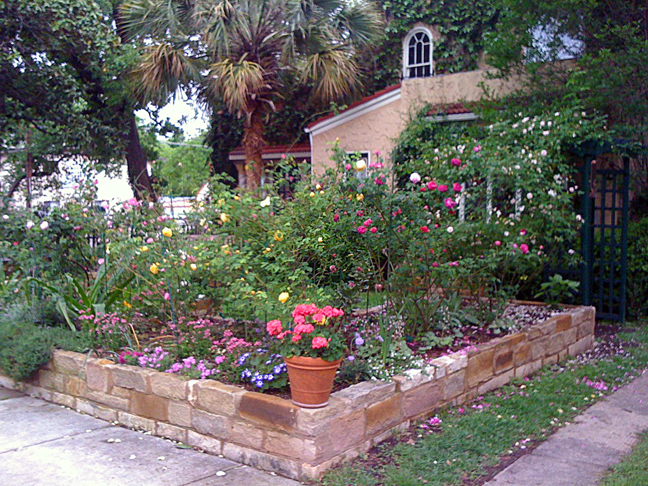 Since then have had great success with a number of roses and would like to share with you what old rose varieties have done well in Austin and some tips I have on growing them. I am going to focus on my favorite antique roses that have cabbagey, fragrant blooms.
Since then have had great success with a number of roses and would like to share with you what old rose varieties have done well in Austin and some tips I have on growing them. I am going to focus on my favorite antique roses that have cabbagey, fragrant blooms.
I have three tried and true plants that grow big, repeat bloom and can handle the Texas heat, they are all Bourbon roses. I will then discuss some old roses I love but - no matter how much love I give them - are not a success in my garden and why. Then I will mention a couple of David Austin roses in old-fashioned English style that do well for me in Austin.
Why do Bourbon roses do well in Austin? They were discovered on the Île Bourbon - now called Réunion - off the coast of Madagascar in the Indian Ocean growing wild and free in the tropical heat. No one knows for sure, since there are no records of how they were bred, it might have been a natural cross-breeding, perhaps the result of a cross between the old European rose, Autumn Damask, and the 'Old Blush' China rose, both of which were frequently used as hedging materials on the island. Hedges on the island were usually planted in two rows of these roses. The fact that the Bourbon rose occurred naturally and flourished on its own without human intervention meant it had been tried and proven through natural selection by Mother Nature herself, which gave it toughness and vigor. Bourbons get their repeat bloom from their china heritage and their big flowers and scent from the Damask. Bourbon roses are generally tough plants and can take the heat and sun, which made them successful hedge plantings. Bourbons can grow big, thick and tough canes, many have thorns, which can be woven into natural fences. The Portuguese arrived on Île Bourbon in the early 16th century. They could have brought Damask roses there from Europe and other roses from China and Japan. They flower repeatedly on vigorous, frequently semi-climbing shrubs with glossy foliage and purple-tinted canes. The French arrived in the 1660's. "Bourbon" comes from the name of the royal house of France. Breon, a botanical traveler for the French Government, arrived on the island in 1817 and was curator of the Botanical and Naturalization garden there. A man named Perichon in San Benoist, in planting a hedge found in his young plants one that was very different from the others in its shoots and foliage, which was purple when new and evergreen with huge rough leaves. Breon grew many examples of this rose and sent both seeds and plants to Henri Antoine Jacques, gardener at the Chateaux de Neuilly, estate of the Duc d' Orleans, - who later became King of France - near Paris, France, who distributed the rose to all of the top rose cultivars in France. At that point the rose was commonly called Bourbon Jacques. In the spring of 1821 it became a model for the famous rose painter, Redoute as Rosier de Bourbon. Seeds from this rose were very fertile and vigorous, it took a couple of years of breeding to perfect the flowers and the plant was introduced commercially as cuttings in 1821. Bourbon roses were not a success in England at the time, English gardeners thought the rose was not well-mannered, course, with big flowers and a scent was too strong and bold.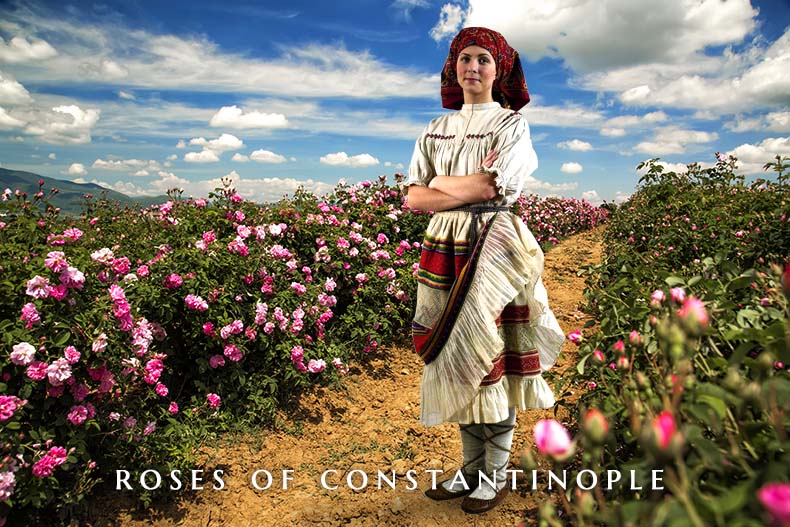
It's an interesting side story that the city of Constantinople was covered with wild and cultivated roses in its last days. The Ottoman Turks had the city under siege for decades in a Stalingrad WWII-like situation. Most of the population fled the city in the last years years before the fall of Constantinople on May 29, 1453. Like on the Île Bourbon roses hedges were grown all over the city. They were highly effective in keeping animals out of cultivated gardens. The roses of Constantinople were mentioned by travelers to the city. It was one of the interesting features of the city. One can assume that they were fragrant, white, pink or red roses. Special rose varieties were grown in the Imperial gardens for the much-reduced court of the Byzantine Emperor and his family. A large number of different varieties of roses were grown in Constantinople. Kazanlik, the Damask rose - Rosa Damascena Trigintipetala - now principally grown in Bulgaria for its fragrance and in the production of rose attar - was grown in Constantinople. It is still found wild in Isparta, Turkey, where it has been grown commercially for at least 1,000 years. You can see it below: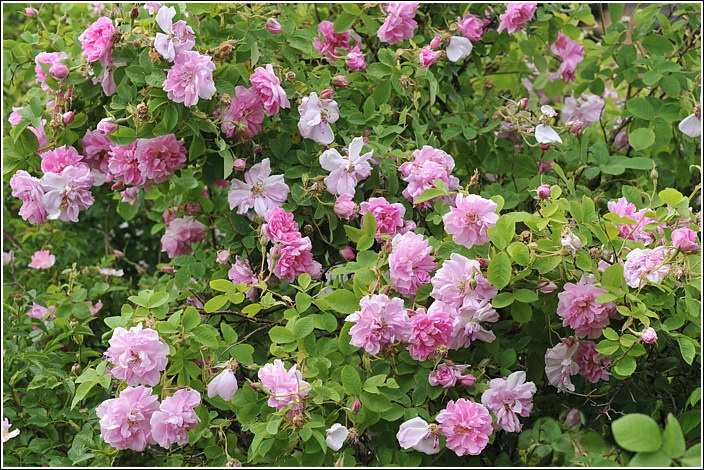
The monasteries and convents of the city were the principal commercial growers of roses. Although huge quantities of rose petals are required to distill rose scent, and the picking of buds and flowers can be tortuous due to thorns, dried petals are light and easy to transport. Byzantine monasteries were often linked in far-flung religious and business relationships. They were responsible for the distribution of different rose varieties to branches of their monastic houses around the empire and in Serbia, Romania and Bulgaria. A huge amount of rose oil was needed every year for the churches. It was in rose water that was used by the clergy to bless the people and anoint holy icons. It was also used in incense and candles. Most of the light in churches like Hagia Sophia came from hanging silver candelabra which held glass oil lamps. Scented rose oil was used on very special occasions there. These same hanging glass oil lamps were used in homes and in Imperial palaces, where scented oil was also used. There were special blends of rose incense from Constantinople that are still made today. Rose water and perfumes were used by the Empress and her ladies, but the common people also loved roses and used rose scent as well. In better times there had been special shops that were dedicated to selling perfumes, including attar of roses. The most famous shops were near the gate of Great Palace and close to Hagia Sophia.
On the day before Constantinople fell to the Turks the people had made great wreathes and garlands of roses to adorn the Church of Theodosia, whose feast day was that Tuesday, May 29th. The last Emperor, Constantine XI and the Patriarch attended the last service here in honor of Saint Theodosia. The icons and the altar were also covered with roses. When the city fell the church was full of worshipers who had taken refuge there for protection. The Turks smashed their way into the church and massacred or enslaved everyone inside. The rose garlands were ripped from the church in search of hidden valuables, jewels on icons torn off, the holy images were smashed and the altar was desecrated. The holy relics - including those of Saint Theodosia - were destroyed. The body of Theodosia, preserved for 600 years in a jeweled, gilt silver reliquary was given to dogs to eat. A similar scene - on a much larger scale - was taking place in the great church of Hagia Sophia where perhaps 12,000 people had taken refuge. After the conquest the Church was converted into a mosque and was known as the "Mosque of the Roses".
Here is a reconstruction of what the church looked like in Byzantine times from the website Byzantium 1200. The facade of the church would have been plastered and painted, most likely with frescoes of saints and ornament, perhaps including roses.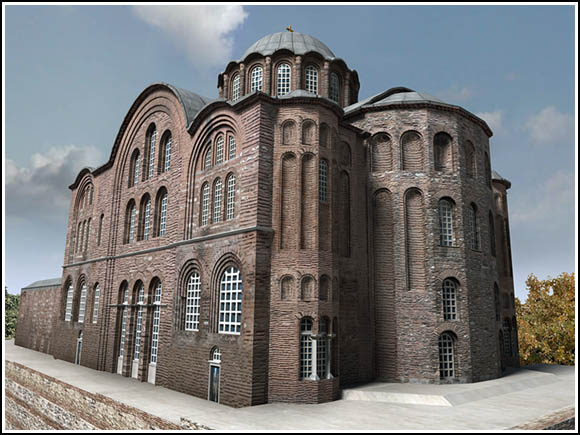 There is a rose that claims to have been brought from Constantinople by crusaders who sacked the city in 1204. "Uetersener Klosterrose", is an ancient rose that was found in an Cistercian monastery. After the Fourth Crusade the Latins occupied Constantinople for almost 70 years. The Byzantine monks were expelled and Latin ones moved in to their monasteries. This rose was found by Cistercian monks, who brought it to Germany after the Greeks retook the city and the Latins fled. This rose was dedicated to the Virgin and grows like crazy - to 9 feet or more - without any of the diseases that plague modern roses. The Uetersener Monastery is in Schleswig-Holstein. Much of the loot taken by the crusaders from Constantinople ended up in Germany. Could this be a hedge rose of Constantinople? Here it is:
There is a rose that claims to have been brought from Constantinople by crusaders who sacked the city in 1204. "Uetersener Klosterrose", is an ancient rose that was found in an Cistercian monastery. After the Fourth Crusade the Latins occupied Constantinople for almost 70 years. The Byzantine monks were expelled and Latin ones moved in to their monasteries. This rose was found by Cistercian monks, who brought it to Germany after the Greeks retook the city and the Latins fled. This rose was dedicated to the Virgin and grows like crazy - to 9 feet or more - without any of the diseases that plague modern roses. The Uetersener Monastery is in Schleswig-Holstein. Much of the loot taken by the crusaders from Constantinople ended up in Germany. Could this be a hedge rose of Constantinople? Here it is:
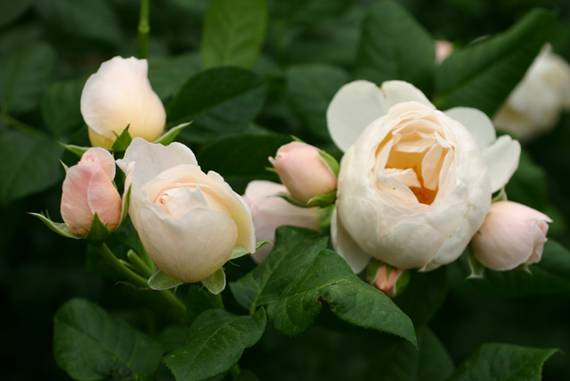
My favorite Bourbons are Madame Isaac Pereire from 1881 and Madame Ernst Calvat, a natural sport - or mutation - of Madame Isaac discovered in 1888. Madame Isaac was bred by by Armand Garçon and introduced in France by Margottin Père & Fils of Paris who were horticulturists and plant retailers. Madame Isaac is a big plant that can grow canes up to 12 feet in length - it is often grown as a climbing rose and is an effective rose for an arch or pergola. The leaves are large and the rose-madder colored deep purple flowers are among the biggest to be found in roses. They are 5-6 inches, very full with more than 40 petals, cupped with a quartered bloom form - very cabbagey! The scent is very strong - perhaps the strongest deep rose perfume to be found - deep, heavy Damask with raspberry which adds sweetness is the way to describe it. The scent can last all day. The branches are covered with dozens of flowers (hundreds on a mature plant) and in my garden the scent carries across the street. Madame Isaac blooms in waves, a huge long one in spring of 45 days followed by lesser waves of flowers in late summer and Fall. I have even had flowers on Madame Isaac in December and January if there is no frost. It's a good cut rose in informal, old rose arrangements.
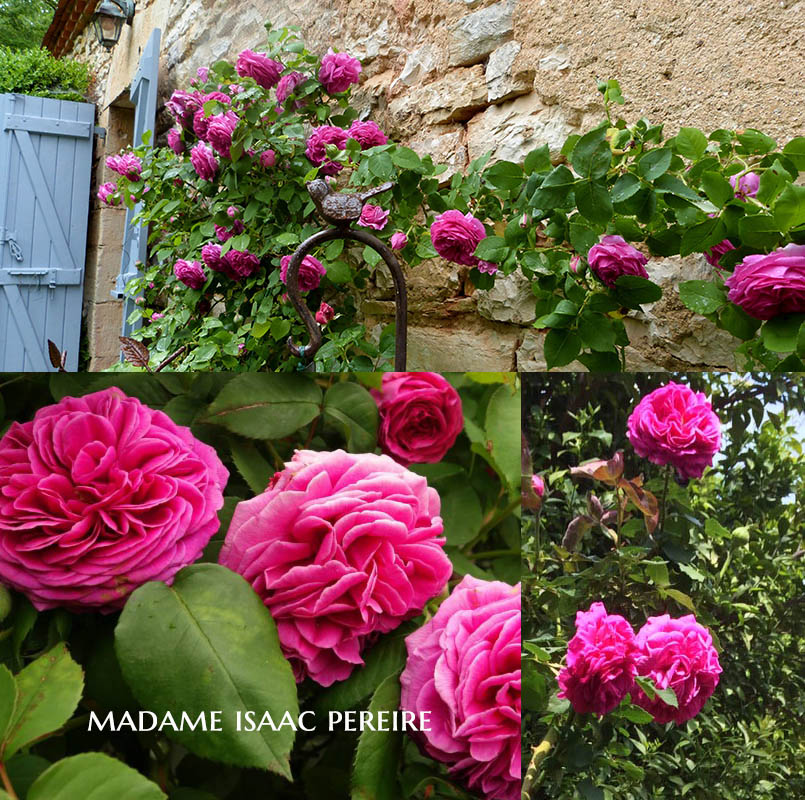 This rose is best when grown on its own roots and will spread into a small mass on its own. Since I have grown this rose in special rose soil in raised beds I can't tell you how it would do in heavy Texas clay. It can even send out runners - but these are not evasive. I don't have disease problems with them. The rose will even grow in Austin when it's 100F, and does not seem to go completely dormant in deep summer here. Once it's established it can throw off enormous, thick and vigorous canes. It takes two seasons for it to mature and reach it's full size. The rose lives for a very long time on its own roots - 20-30 years. It is a challenge to find big cabbagey roses that can survive our Texas heat, but this one does. Other cabbage roses will wilt and fry in direct Austin sun. I have tried to grow Marie Louise and Fantin Latour - two roses I used to love in San Francisco unsuccessfully. The flowers appear in the morning and are gone in an hour. An entire rose can loose all of its buds, never seeing a single one open successfully and last a day.
This rose is best when grown on its own roots and will spread into a small mass on its own. Since I have grown this rose in special rose soil in raised beds I can't tell you how it would do in heavy Texas clay. It can even send out runners - but these are not evasive. I don't have disease problems with them. The rose will even grow in Austin when it's 100F, and does not seem to go completely dormant in deep summer here. Once it's established it can throw off enormous, thick and vigorous canes. It takes two seasons for it to mature and reach it's full size. The rose lives for a very long time on its own roots - 20-30 years. It is a challenge to find big cabbagey roses that can survive our Texas heat, but this one does. Other cabbage roses will wilt and fry in direct Austin sun. I have tried to grow Marie Louise and Fantin Latour - two roses I used to love in San Francisco unsuccessfully. The flowers appear in the morning and are gone in an hour. An entire rose can loose all of its buds, never seeing a single one open successfully and last a day.
Madame Ernest Calvat was released in 1888, it was a mutation of Madame Isaac and was discovered by Madame Calvat in her garden, where it appeared spontaneously as a sport. Marie Calvat, nee Perrin was the wife of Ernest Jean-Marie, son of Claude-Ernest Calvat mayor of Grenoble from 1871-1874. Ernest Calvat left his profession for horticulture, especially chrysanthemums. He invested most of his and his wife’s fortune in them. In 1888, the rose grower Schwartz names a rose in honor her. She died of pneumonia in 1896 at the age of 37. It is a beautiful deep, rich pink and the scent is a strong old-rose damask one, without the raspberry of Madame Isaac. Its growth habit is the same as that described for Madame Isaac. I grow these two plants together and weave the canes together into a 5ft tall hedge across the back of my planting beds. Mixing the two roses gives me more flower variety in a small garden. If I had the room I would plant them as a single variety with multiple plants in a row or big clump for more impact.
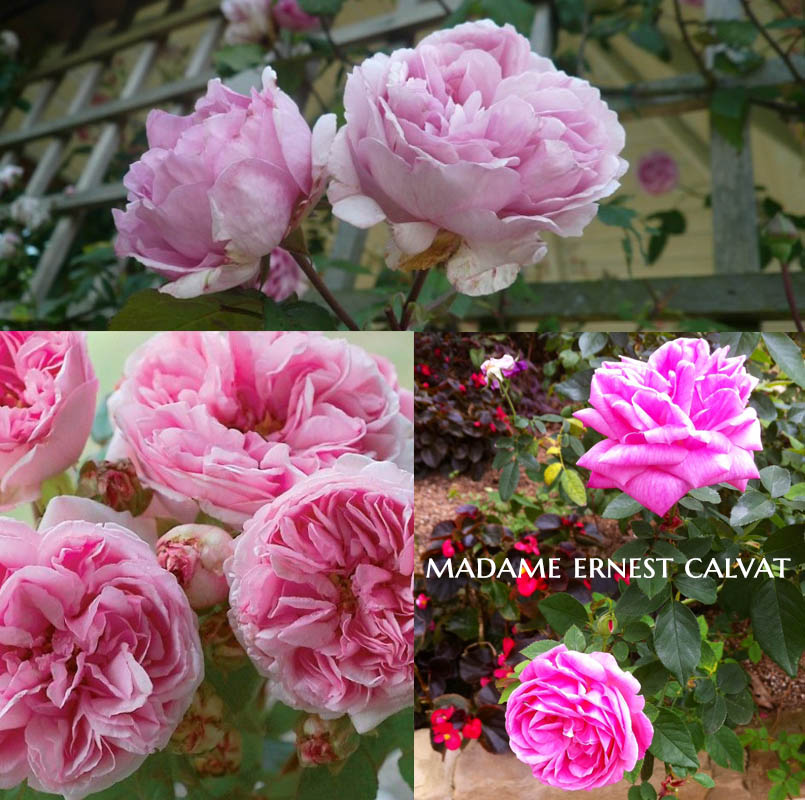 These roses, not not need much pruning, let them grow.
These roses, not not need much pruning, let them grow.
I have also grown two other Bourbons. Variegata di Bologna dates from 1909, has smaller flowers that are dramatically striped in white and purple. It is very fragrant and is said to only bloom once heavily in late spring, but I have had it repeat in fall with a few flowers. My Variegata di Bologna died when it was 30 years old - I don't know if it was old-age. It lost its vigor at the end and sort of faded away. Since I have a small garden I decided not to replace it. It grows best on its own roots and will spread into a clump, with runners. You can always remove the runners and give them to friends.
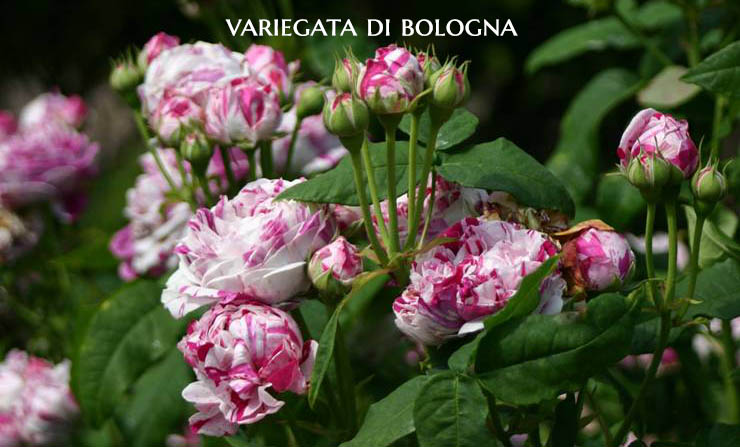 In 2015 the Telegraph newspaper in the UK named Madame Isaac and Variegata to their top 19 garden roses list. Madame Isaac was number 1. It grows well in Austin and in England.
In 2015 the Telegraph newspaper in the UK named Madame Isaac and Variegata to their top 19 garden roses list. Madame Isaac was number 1. It grows well in Austin and in England.
One of my favorite roses when I lived in the Bay Area was the Bourbon, Reine Victoria. It was grown by Schwartz and released in 1872. It was named for Queen Victoria of Great Britain. It was originally called the Shell Rose, for obvious reasons when one looks at the cupped flowers with shell-like petals. The flowers are carmine-pink, which age to pink with a strong fragrance with around 30 petals. It blooms in medium to large, double small clusters, with a cupped, globular bloom form. Reine Victoria blooms in flushes throughout the season. The unique fragrance is strong, yet light and sweet - fruity -at the same time. It might be my favorite as far as scent is concerned. Its growth is upright with long vertical canes growing to 8ft. The canes are rather brittle and can break from the base if you try to bend them too fast. In appearance the rose is rather delicate and lacy, the canes need support in windy weather. You can peg the canes for more blooms. I love this rose, but have had plants completed defoliated by blackspot in two days that even destroyed the canes. I have also had problems with thrips who seem to love the buds on the plant like no other rose. They can eat them all up in a few hours. Perhaps a systemic would help, but I try not to use them because I have Satsuma mandarin orange trees and loquats growing in my garden. By the time you see there is a problem, spraying is too late. How depressing when you love a rose like this one! Right now I don't have any Reine Victorias in my garden I can't handle loosing them after all the work of growing them and waiting for the flowers.
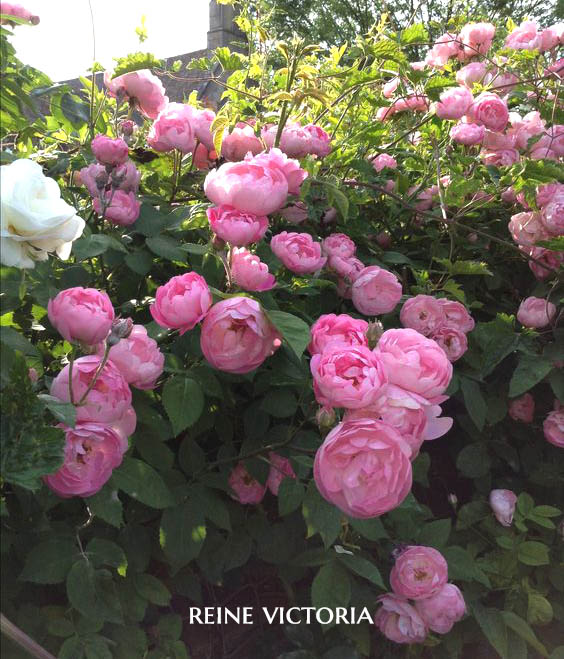 I have had great success with another Bourbon, Souvenir de la Malmaison which I only grow in it's climbing form. It was grown by Jean Beluze, (1793 - 1869) who lived in Lyon, France and was introduced in 1843. It is said to have obtained its name from its introduction in Russia where it was supposedly grown at Pavlovsk and Tsarskoye Selo in the Imperial and Grand Ducal gardens there as a memory of Josephine's garden in France. Alexander I of Russia was good friends with Josephine and visited her at Malmaison during the war with Napoleon. The Tsar sent his mother plants - especially roses - for her gardens at Pavlovsk from France in 1815. I imagine that Josephine would have given Alexander plants from her famous garden for his wife and mother, but I have never seen this documented anywhere. Roses and lilacs were very important in the Imperial gardens, some plants even had full time guards to protect them in winter. Enormous care was given to them, Nicholas and Alexandra used to visit a rose in their gardens that was said to have dated from the time of Catherine the Great and was over 100 years old. I am not sure how Souvenir might have gotten back to France in 1843 to be released under the name. Alas, I suspect the origin of the name in Russia is a romantic legend.
I have had great success with another Bourbon, Souvenir de la Malmaison which I only grow in it's climbing form. It was grown by Jean Beluze, (1793 - 1869) who lived in Lyon, France and was introduced in 1843. It is said to have obtained its name from its introduction in Russia where it was supposedly grown at Pavlovsk and Tsarskoye Selo in the Imperial and Grand Ducal gardens there as a memory of Josephine's garden in France. Alexander I of Russia was good friends with Josephine and visited her at Malmaison during the war with Napoleon. The Tsar sent his mother plants - especially roses - for her gardens at Pavlovsk from France in 1815. I imagine that Josephine would have given Alexander plants from her famous garden for his wife and mother, but I have never seen this documented anywhere. Roses and lilacs were very important in the Imperial gardens, some plants even had full time guards to protect them in winter. Enormous care was given to them, Nicholas and Alexandra used to visit a rose in their gardens that was said to have dated from the time of Catherine the Great and was over 100 years old. I am not sure how Souvenir might have gotten back to France in 1843 to be released under the name. Alas, I suspect the origin of the name in Russia is a romantic legend.
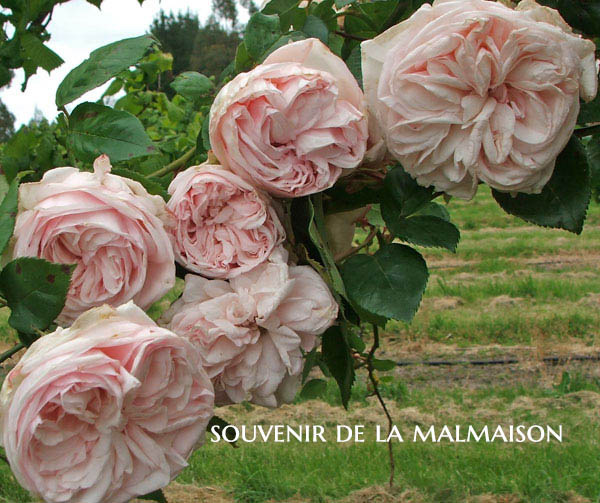 Souvenir has the first blooms in my garden which are white, light pink shading, darker outer petals. It has a strong, and unique tea fragrance. Once you smell it you will never forget it. The flowers are large, 5inches, very double, and are borne in mostly solitary, small clusters, cupped-to-flat, with a wonderful, quartered bloom form. This is a perfect flat cabbage rose. It blooms in flushes throughout the growing season and can even have blooms in December and January. This rose has a problem with flowers balling, especially the early ones in late winter and early spring. It grows without thorns on long, strong canes which I pegg vertically for more flowers. Like all bourbons this rose is best grown on it's own roots, and will clump into a loose bush. I also get short runners on this rose, too, when its on its own roots. I have had mildew problems with this rose, especially if I over fertilize it in and it's a wet spring. Souvenir can take the Texas heat, but the flowers can suffer a little in direct summer sun. They are long-lasting flowers when you leave them on the plant. Thrips seem to like this rose too.
Souvenir has the first blooms in my garden which are white, light pink shading, darker outer petals. It has a strong, and unique tea fragrance. Once you smell it you will never forget it. The flowers are large, 5inches, very double, and are borne in mostly solitary, small clusters, cupped-to-flat, with a wonderful, quartered bloom form. This is a perfect flat cabbage rose. It blooms in flushes throughout the growing season and can even have blooms in December and January. This rose has a problem with flowers balling, especially the early ones in late winter and early spring. It grows without thorns on long, strong canes which I pegg vertically for more flowers. Like all bourbons this rose is best grown on it's own roots, and will clump into a loose bush. I also get short runners on this rose, too, when its on its own roots. I have had mildew problems with this rose, especially if I over fertilize it in and it's a wet spring. Souvenir can take the Texas heat, but the flowers can suffer a little in direct summer sun. They are long-lasting flowers when you leave them on the plant. Thrips seem to like this rose too.
I would like to mention three David Austin Roses, which are not old, by have good cabbage form and do well in my garden. I have grown The Dark Lady, which can handle our Texas heat. It has medium sized rosette blooms with 140(!) petals, which are dark red with an old rose fragrance. The beautiful flowers are borne mostly in small solitary clusters, cupped-to-flat bloom form. It is a prolific bloomer with erupts in flushes of flowers throughout the season. It has long, pointed, rounded bud and grows upright with lush foliage. It does suffer from disease and needs more tender loving care, but it is worth it. It is one of the first roses to bloom and doesn't stop until the first frost. If we don't have a frost is just keeps on growing. This rose is hard to find, David Austin sells out of it early in the season.
Darcy Bussell, another David Austin is a bright and clear red. It grows more bush-like than The Dark Lady, and has absolutely no problems with disease. I grow it in the ground and in pots. The scent is more fruity than The Dark Lady and it never stops blooming. You can totally ignore this bushy plant and it keeps on going! It's a smaller plant - 2-3 ft - and the roses have 70(!) petals.
Mumstead Wood is a dark red rose. I don't find it as dark red as David Austin reports and shows in its pictures on their website. It's a richer red than Darcy, but not by much. David Austin writes on their website "It is a healthy variety with sumptuous, deep velvety crimson blooms. The strong Old Rose fragrance with fruity notes of blackberry, blueberry and damson", which is a good description. I am growing three of these in my garden this year with great success and many blooms. It has 70+ petals to each flower and never stops blooming so far! David Austin says the rose is disease free and that has been my experience. My only complaint is that aphids (and other bugs) seem to love this one and I have to keep up on controlling them. Three weeks after I planted these in my garden one of them was defoliated by bugs. It came right back with strong growth. In my opinion, the fragrance is not as strong and long lasting as you find in the Bourbons.
You can purchase all of the Bourbons mentioned in my blog article from Antique Rose Emporium in Brenham , Texas for $19.95 per plant during the shipping seasons. They are all grown on their own roots and are grown in Texas. Their plants are very healthy and I have never had any problems with them. David Austin in Tyler, Texas sells Madame Isaac as a grafted plant. Of course all of the David Austin roses can be purchased from them for $29.95 each with discounts for 3 or more plants. I have been told that their plants are grown in Texas, too, but I am not sure. Their packaging is really pretty and they make great gifts. David Austin guarantees their plants for 5 years. Some varieties do not do well in the Austin heat, and it's best to do your research before buying.
Please comment below if you have anything to say about my blog, Bourbon roses, David Austin roses and gardening in Austin. Share your experiences with them with those who read this article.
Bob Atchison














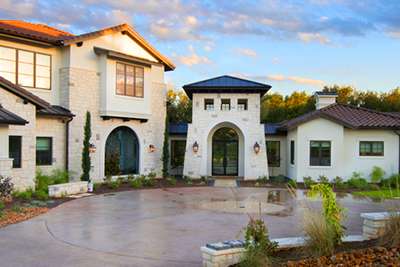
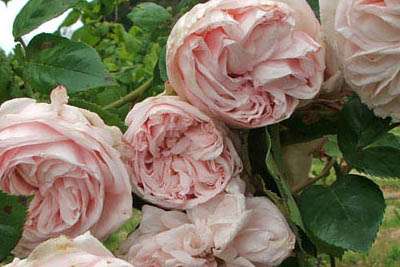
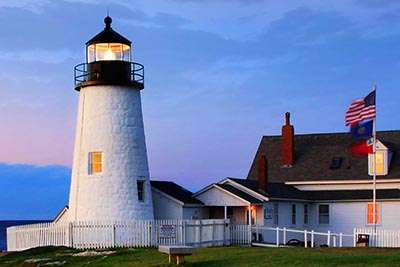
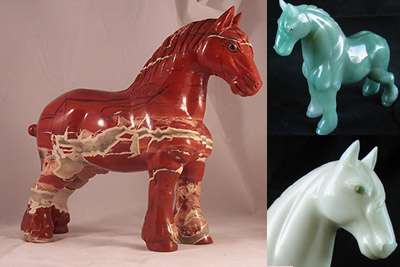



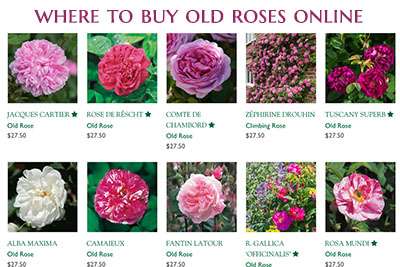





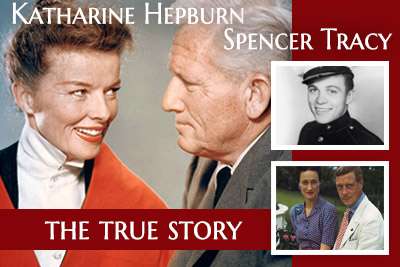
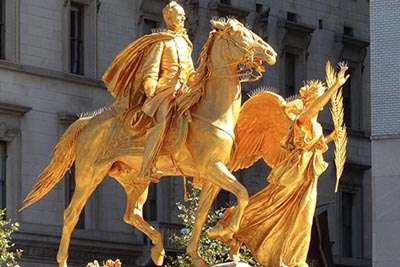
 New Home Builder Website Checklist
New Home Builder Website Checklist 







